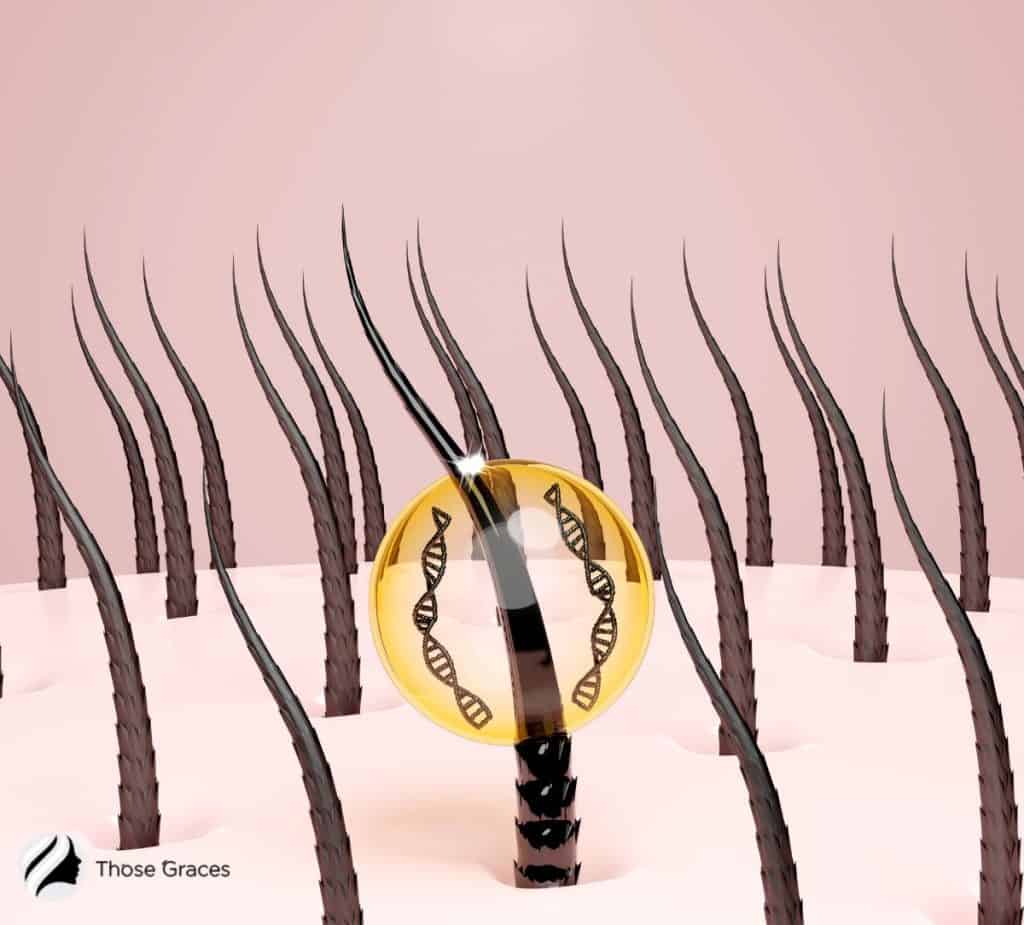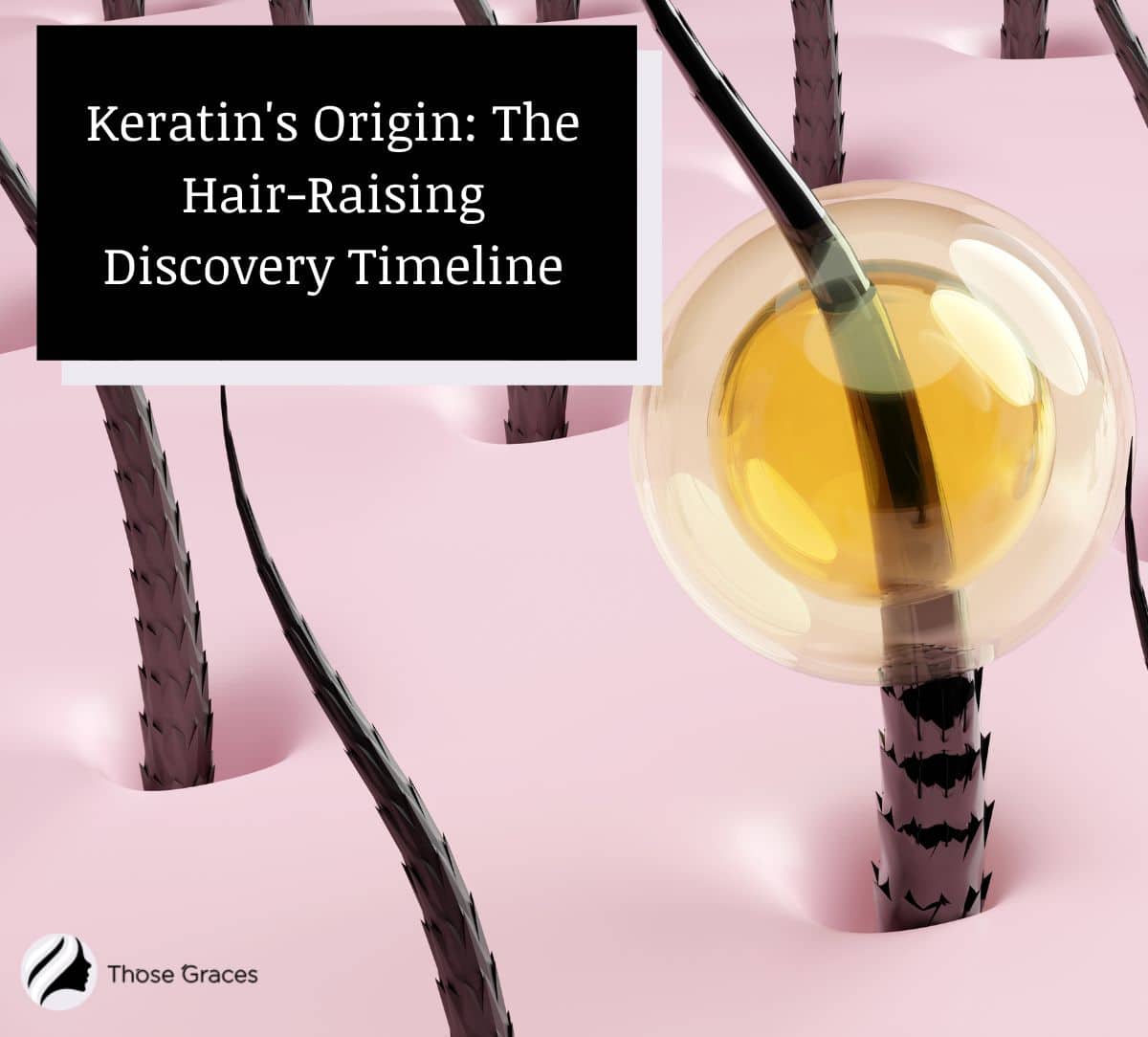If you’re wondering and meaning to ask, “when was keratin discovered” get ready to question answered.
My years of experience in the beauty industry always validate the idea that keratin is the most important protein in human hair, which is why it’s okay to know when this magic was discovered.
But here, I also simplify the keratin synthesis process, keratin’s role in epidermal development, and how it matters for hair growth.
So first things first…
Table of Contents
When Was Keratin Discovered?
The structural protein, keratin, was discovered in 1991 (1).

Although intermediate filaments were characterized prior to 1991, this key discovery helped cement the role of human keratins within these structures.
These keratin intermediate filaments have crucial functions in the epidermal cells of human skin, as well as various other epithelial cells such as those in the intestinal and foveolar epithelium.
The expression of keratin in epithelial cells was linked to certain mechanical properties, as cell fragility was discovered in epithelial cells suspected to have hereditary keratin diseases.
Research using transgenic mouse models has illuminated the role of epidermal keratin intermediate filament proteins, including their mechanical properties.
Further analysis has also provided insight into their expression patterns.
The skeletal muscle cells of transgenic mice were used particularly for these studies since skeletal muscles are a good model for studying mechanical activities.
The process of keratin synthesis and the patterns of this cytoskeletal protein’s expression have been elucidated.
This understanding has significantly broadened the use of keratins in epidermal development.
Evidence from cell biology findings has shown that this cytoskeletal protein is produced through a complex series of steps.
This process begins with gene expression and culminates in protein expression. This is necessary for the protein’s amino acid sequence to be adequately maintained.
Across the different epidermal layers, such as the basal layers and the outer layer, keratinocyte differentiation occurs continuously.
This process, responsible for the production of keratin, is essential to sustain epidermal development.
For instance, in human hair, keratin production is initiated by hair follicle stem cells.
These cells undergo epithelial differentiation, giving rise to keratinocytes in the basal layer of the interfollicular epidermis.
Significant Developments Before and After the Discovery of Keratin
Before and after the discovery of keratin, numerous studies have been conducted, each contributing significant advancements.
These studies primarily focus on better understanding keratin’s characteristics and its tissue-specific expression patterns.
Starting from about twenty years ago, when Moll Et Al. published the protein names of all known human keratins, we knew only 19 cytoskeletal protein variants in the keratin gene family’s phylogenetic trees.
Now, we are aware of 54 keratin genes involved in keratin production.
The acidic protein category with amino acids carrying an acidic charge had 18 members, while there was just one basic keratin known then.
From recent immunohistochemical studies, antibodies to keratin have been used in human skin epidermis research (2).
Epithelial cytokeratins/keratin intermediate filaments have been significantly found to be useful as markers in tumor pathology, according to research (3).
Currently, about 20 cytokeratins have been discovered, including cytokeratin 18 and cytokeratin 20.
In understanding epithelial tumors, such as those of the luminal cells in mammary tissue, transitional cell carcinomas, basal cell carcinomas, and palmoplantar keratoderma, these epithelial cytokeratins have been valuable.
Specifically, they have served as essential markers in tumor pathology.
There’s a wealth of knowledge on the application of keratins and cytokeratins in understanding tumor pathology available in research papers.
You can explore these discoveries further by checking out the numerous studies accessible online.
Some of the research study authors to check to include Moll et al.
- – The human keratin: Biology and Pathology, J. Schweizer Et Al.
- – New consensus nomenclature for mammalian keratins, L. Langbein Et Al.
- – The catalog of human hair keratins, Elaine Fuchs E.
- – The expression of keratin genes in the epidermis and cultured epidermal cells, M.A. Rogers Et Al.
- – Low fossilization potential of keratin protein revealed by experimental taphonomy, Coulombe Et Al.
- – A function for keratins and a common thread among different types of epidermolysis bullosa simplex diseases, Leube RE
- – Structural and regulatory functions of keratins, Toivola Et Al. – Keratins in health and diseases, Galarneau Et Al.
- – Keratins modulate hepatic cell adhesion, size, and G1/S transition, Omary MB
- – Keratins turn over by ubiquitination in a phosphorylation-modulated fashion, Leigh IM
- – Keratin 19: predicted amino acid sequence and broad tissue distribution, Eady RA – Human keratin diseases, Degenstein L
- – Deciphering keratin functions. You can also consult the Journal of cell biology for more findings.
Some of the significant findings on keratin synthesis have been applied in formulating keratin solutions which are now used in keratin hair treatments.
These keratin hair treatments prevent hair loss, especially in human hair with low keratin levels.
Now such defects in human hair, such as hair loss, hair breakage, and frizzy hair, have been significantly solved through these significant developments.
You can watch this video to understand how keratin hair treatment works:
FAQS
Who discovered keratin protein?
Where is keratin first produced?
What is human keratin made of?
Conclusion
Now that you’ve gotten answers to your question, “when was Keratin discovered” I’m pretty sure you have a deeper into the development and impact of keratin on the hair.
One point of consensus is that the application of keratins has significantly advanced our understanding of hereditary keratin diseases.
This knowledge has also greatly influenced our grasp of the cell biology of genetic diseases in various epithelial tissues.

Resources
- 1. Coulombe PA. Discovery of keratin function and role in genetic diseases: the year that 1991 was. Kozminski KG, ed. Molecular Biology of the Cell. 2016;27(18):2807-2810. doi:10.1091/mbc.e15-09-0625
- 2. Porter RM. The New Keratin Nomenclature. Journal of Investigative Dermatology. 2006;126(11):2366-2368. doi:10.1038/sj.jid.5700532
- 3. Barak V, Goike H, Panaretakis KW, Einarsson R. Clinical utility of cytokeratins as tumor markers. Clinical Biochemistry. 2004;37(7):529-540. doi:10.1016/j.clinbiochem.2004.05.009



